Nakayama is in between Narita And Haneda International Airport
<クッキーについての同意並び欧州居住者向けプライバシーポリシー>
中山・下総・散歩道
The Shogyo-den in Nakayama Hokekyoji
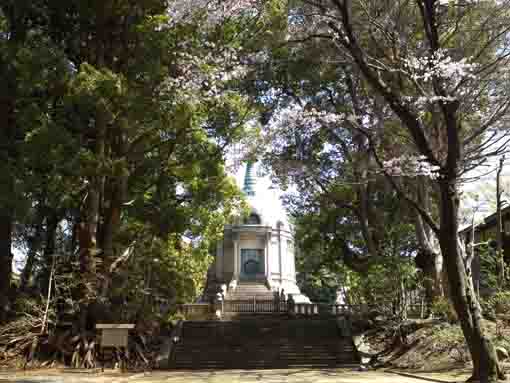
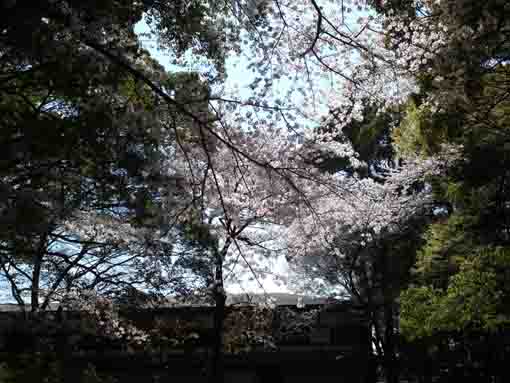
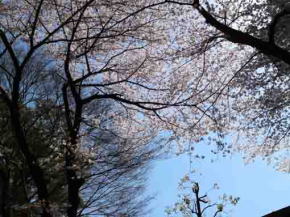
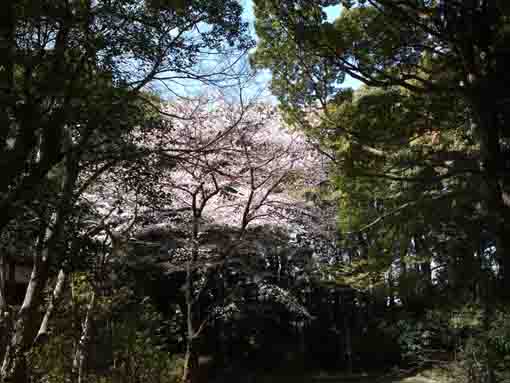
Passing through Hodenmon Gate standing behind Soshido Hall of Nakayama Hokekyoji Temple, there is a path between tall trees like woods, and the end of path, a unique shaped white tower is standing. It is called Shogyoden Hall designed by Chuta Ito, a famous architect from Meiji to Showa era in Japan. On the left side of this building, a small wooden gate called Zuimon that the gate of the incantation of Nichiren Sect is standing. In spring, cherry blossoms paint on the green woods with sakura color.
Why don't you visit Shogyoden Hall in Nakayama Hokekyoji Temple?
Shogyoden Hall
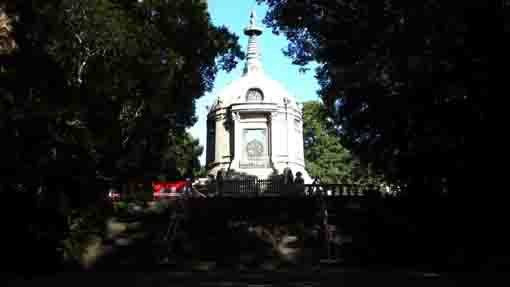
The Shogyo-den
1. This building is called 'Shogyo-den'.Nakayama Hokekyo-ji carefully keeps the two national treasures written by the founder Nichiren (Risho-ankoku-ron and Kanjin-honzon-sho) and the 64 important cultural properties. Shogyo-den was built by combining the best modern technology to keep them completely safe and long time, and to avoid thiefs, fires, blight and harm of the moisture.
1. This building was built in Showa 6th. The plan to build it started 7 years before, Professor Mitsuyoshi Yamada, the professor of law in Tokyo University and the chairman of Hokke-kai led the plan, Hokekyo-ji and the business office of Nichiren Sect had got much support, then it had completed. The designer was Chuta Ito, the professor of engineering in Tokyo University.
1. 'The foundation To Keep the Shogyo' was established at the same time as Shogyo-den was built. It tries to keep the properties for long now.
参考
法華経寺聖教殿前掲示板より
The Architect Chuta Ito
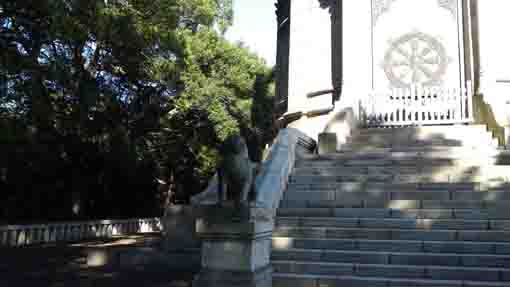
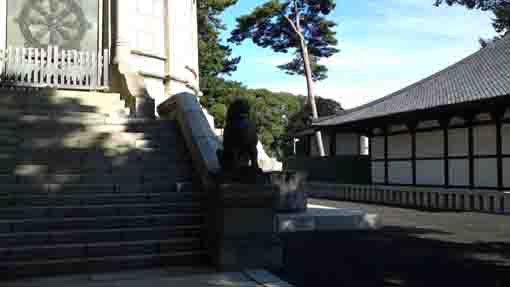
Chuta Ito (1867―1954)
Chuta Ito was an architect, a scholar and a historian studying architecture and a professor at Tokyo University.Chuta Ito was born in October 26th of 1867 in Yonezawa, Yamagata-ken. He went to Tokyo in 1873 since his father became an army surgeon and he moved to Sakura in Chiba-ken in 1878. In 1879, Chuta entered Shikayama Junior High School (now Sakura High School) and he started studying German at Tokyo Foreign Language School in 1881. However, the school was closed, then he entered Daiichi Koto Chugakko in 1885. He graduated from Tokyo University in 1892. Chuta continued studying the architecture at the university. Next year, he presented his famous work 'Horyuji Kenchikuron' (the architecture theory on Horyu-ji Temple), he discussed to comparison between Horyuji Temple and Parthenon in Greece in his report. Later, he taught at the university. He had researched classic or ancient buildings and remains among Asia (Japan, China and India) and he formulated the system of studying the history of the architecture in Japan and Asia. He became a member of the Committee of the Preserving National Property and he worked hard to keep them. Later He was elected as a member of Japan Academy and Japan Art Academy. In addition, he was the first architect awarded the Order of Culture. He was awarded as the First Honorary Citizen in Yonezawa City in Yamagata-ken in 1954. He was passed away in April 7th in 1954.
The List Of Chuta Ito's Architectural Works
Kashihara Jingu in Kashihara City, Nara Prefecture (1890, The Important Cultural Property)Heian Jingu in Kyoto(1895, The Important Cultural Property)
Houkokubyo in Kyoto(1898)
The Pedestal of the Statue of Toshinaga Nanbu in Morioka City, Iwate Prefecure (1908)
Miyazaki Jingu in Miyazaki City, Miyazaki Prefecture(1907The Important Cultural Property)
Kasuisai Gokokuto in Fukuroi City, Shizuoka Prefecture(1910)
The Pedestal of the statue of Sutezo Nishimura in Minatoku, Osaka (1910)
Honganji Dendoin in Kyoto(1912, The Important Cultural Property)
The Main Gate of Tokyo Universitiy in Tokyo (1912, Registered Cultural Property)
Kannondo and Soan in Nanpian Kannonji inTondabayashi City, Osaka(1914)
Yahiko Jinja in Nishikanbara-gun, Niigata Prefecture(1916, the Registered Cultural Property)
The Three-story Pagoda in Gifu Park in Gifu City, Gifu Prefecture (1916, The Registered Cultural Property)
Hoantoin Nittaiji in Nagoya City in Aichi Prefecture(1918, The Registered Cultral Property)
Meiji Jingu in Tokyo(1920)
The Pedestal of the Statue of Hokokannon in Sojiji in Yokohama City (1923, The Registered Cultural Property)
Kanematsukodo in Hitotsubashi University in Tokyo(1927, the Registered Cultural Property)
Okura Shukokan in Tokyo(1927, The Registered Cultural Property)
Gionkaku in Kyoto(1927)
Tokyoto Ireido Hondo iin Tokyo(1930)
General Yamagata Memorial Museum in Yasaka City, Tochigi Prefecture(1929)
Yushukan of Yasukuni Jinja Shrine in Tokyo(1930, the Registered Cultural Property)
Nakayama Hokekyo-ji Shogyo-den in Ichikawa City, Chiba Prefectuer(1931)
Jinmon in Yasukuni Jinja in Tokyo(1933)
Ishitorii (Stone-gate) in Yasukuni Jjinja in Tokyo(1934)
Tsukiji Honganji in Tokyo(1934, The Important Cultural Property)
Hondo (the main hall) in Saijoji in Minamiashigara City, Knagawa Prefecture(1934)
Yushimaseido in Tokyo(1934)
Koma Jjinja in Hidaka City, Saitama Prefecture(1935)
Ozaki Jjinja in Kamaishi City, Iwate Prefecture(1935)
Kaizando and Taishido in Shinshoji in Narita City, Chiba Prefecture(1936)
Bishamondo in Fukoji in Minamiuonuma City, Niigata Pregecture(1937)
Daisodo in Sojiji in Yokohama City, Kanagawa Prefecture(1937, The Registered Cultural Property)
Hondo (the main hall) in Myozenji in Yamagata City, Yamagata Prefecture(1937, The Registered Cultural Property)
Haiseiden in Iga City, Mie Prefecture(1941: The Important Cultural Property)
Uesgi Jjinja Shaden in Yonezawa City, Yamagata Prefecture(1941)
抜粋・引用および参考
法華経寺聖教殿前掲示板
INAX REPORT 特集1 生き続ける建築2 伊東忠太 挑戦する建築家
大辞林
ブリタニカ国際大百科事典
大辞泉
ウィッキペデイァ
The Location and Access to Shogyoden In Nakayama Hokekyoji
Shogoden In Nakayama Hokekyoji Temple
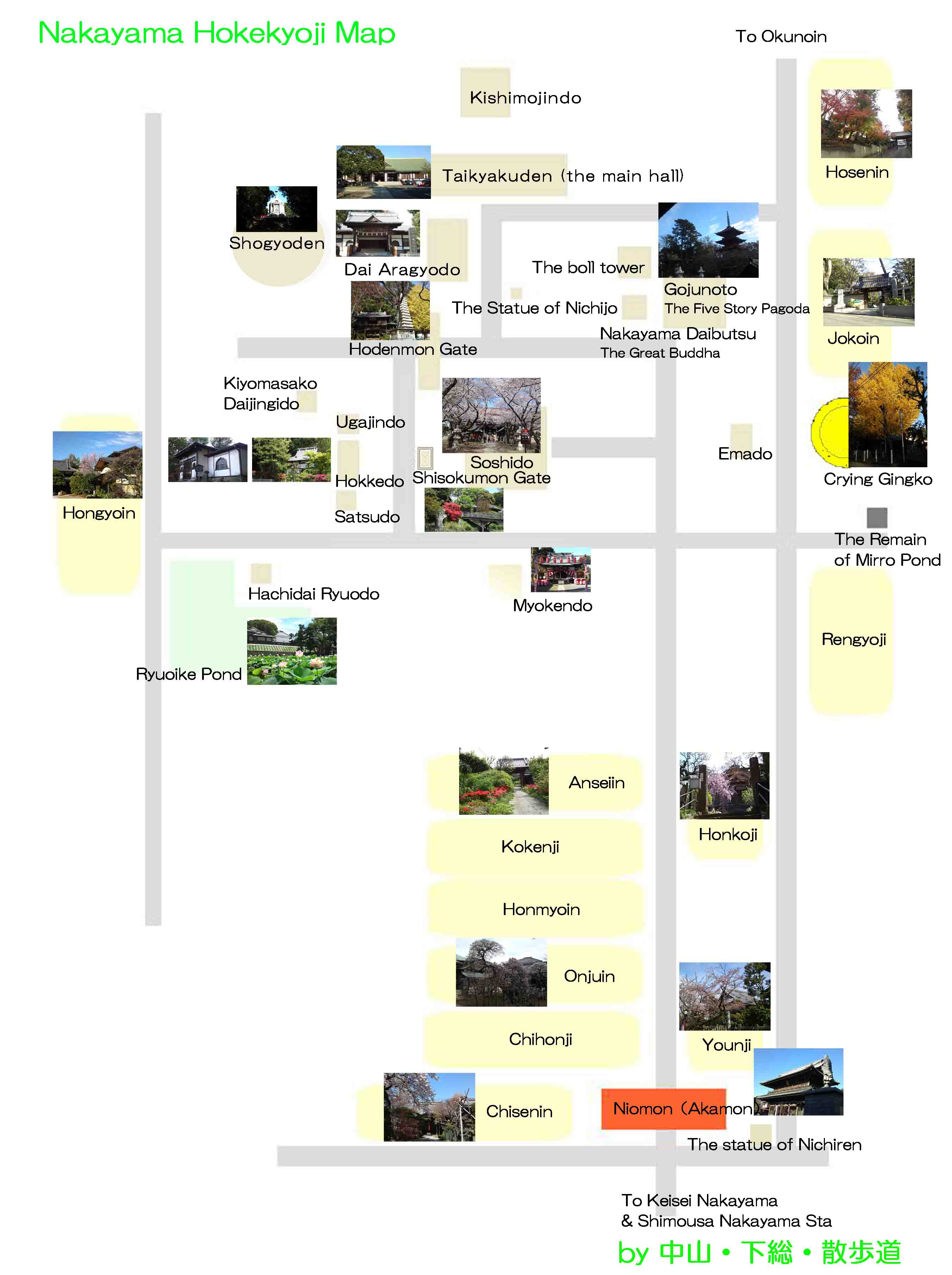
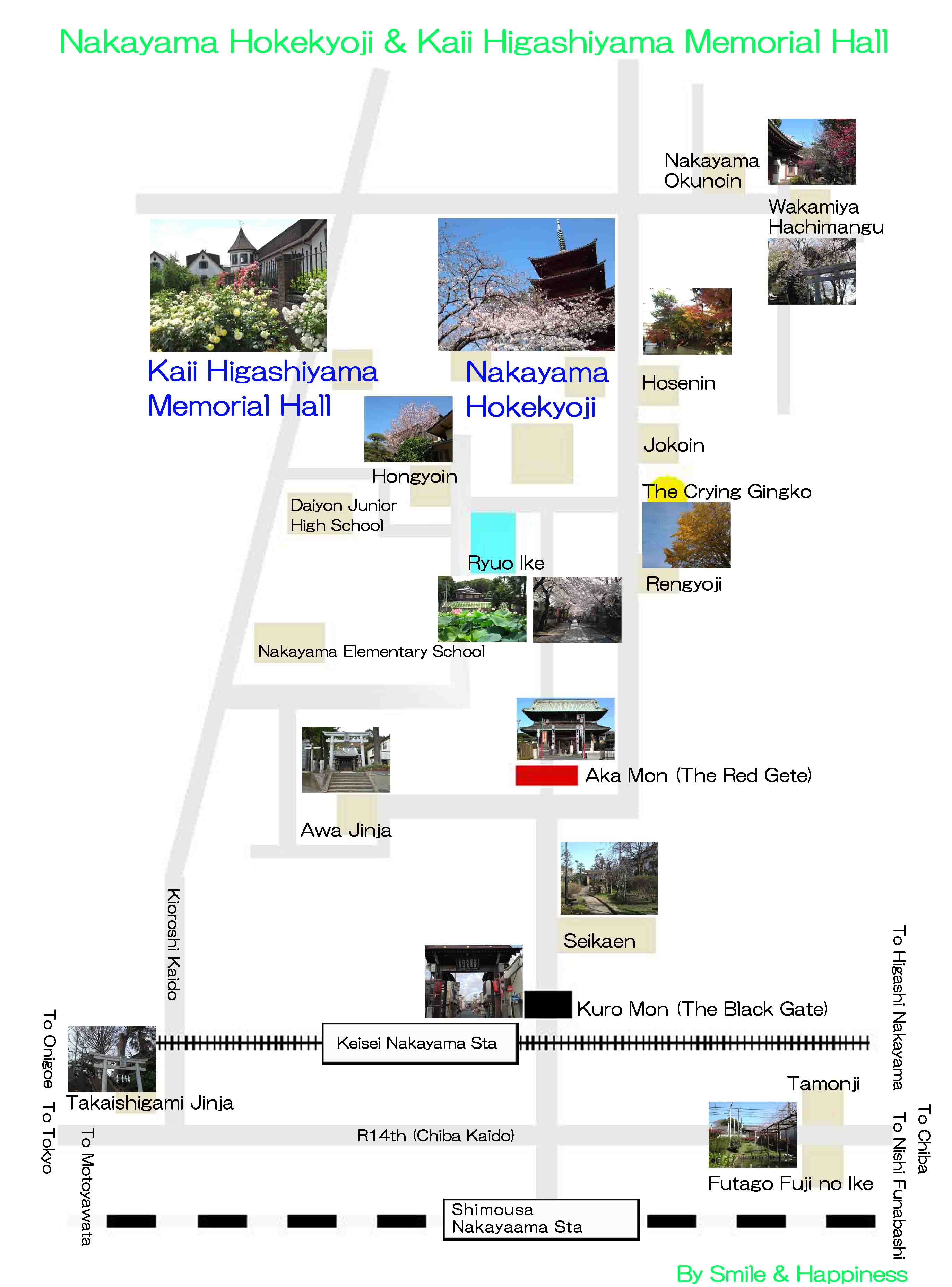
The map near Hokekyoji and Kaii Higashiyama Memorial Hall
PDF of the map near Hokekyoji and Kaii Higashiyama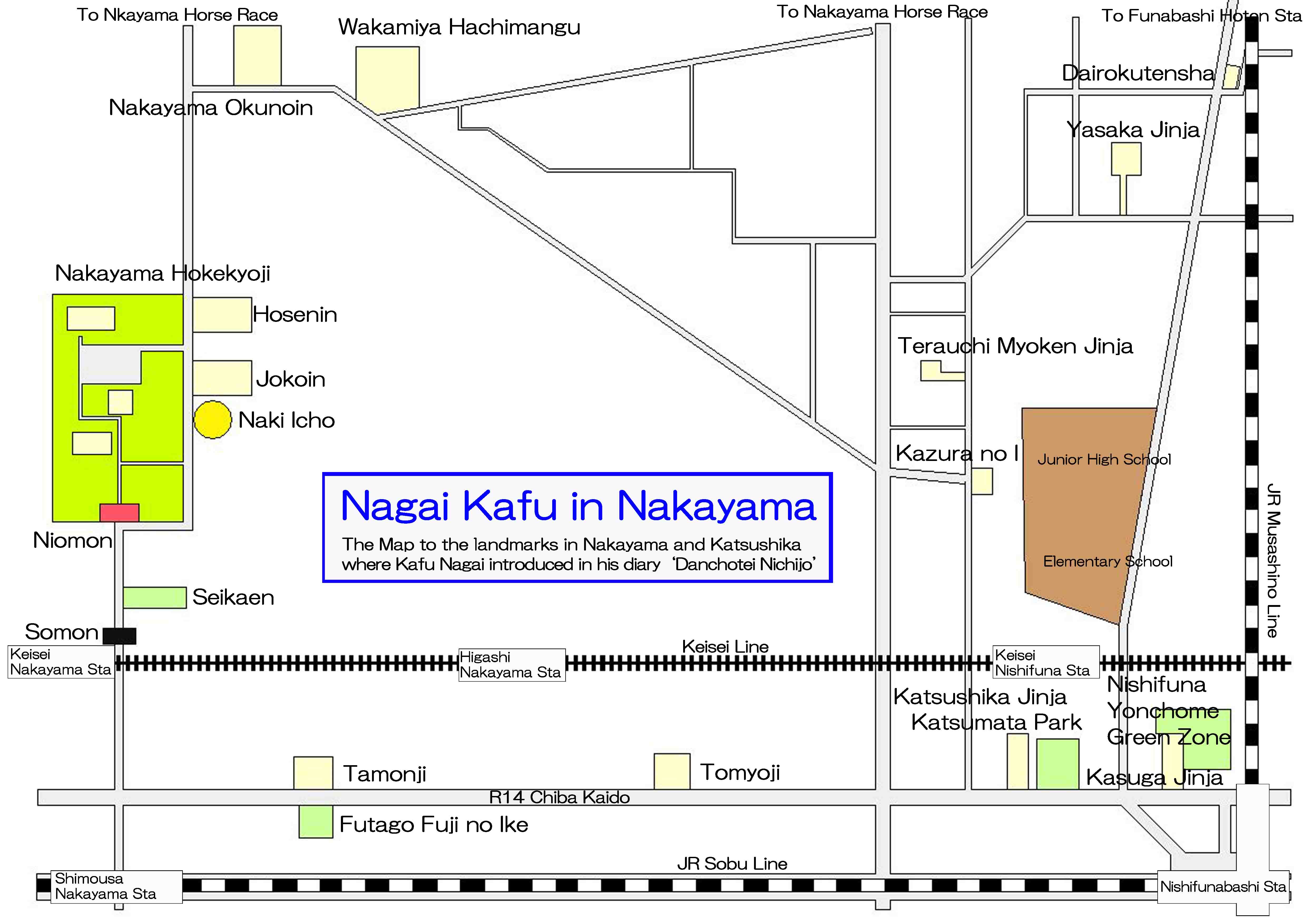
The map to the landmarks where Kafu Nagai introduced in his book
PDF of the map of the noted spots where Kafu Nagai visited- Shogyoden in Nakayama Hokekyouji Temple has great accessibilities from both Narita and Haneda International Airport.
- From Narita International Airport, take Keisei-line and get off Keisei-Nakayama Sta, take minimally 40 minutes from Narita Airport.. And also take JR Sobu-express line, transfer the line at Funabashi to Sobu-Local line, get off Shimousa-Nakayama Sta.
- From Haneda International Airport, take Keikyu-line bound to Narita, and get off Keisei-Nakayama Sta.
- From Tokyo Sta, take Sobu-Express line bound to Chiba or Narita, transfer the line to Sobu-Local line bound to Chiba, Tsudanuma, or Nishi-Funabashi at Ichikawa Sta, get off Shimousa-Nakayama Sta.
- From Akihabara Sta, take Sobu line bound to Chiba, get off Shimousa-Nakayama Sta.
- Take 5 minute walk from Keisei-Nakayama Sta, and take 8 minutes walk from Shimousa-Nakayama Sta.
- 2-10-1 Nakayama, Ichikawa-shi, Chiba-pref, Japan
Slide Show Movies of Sakura Blossoms in Nakayama Hokekyoji Temple
The Photo Movie of Cherry Blossoms in Nakayama Hokekyoji in 2020
The Photo Movie of Cherry Blossoms in Nakayama Hokekyoji in 2019
Let's enjoy viewing Sakura Blossoms in Nakayama Hokekyoji!
Sightseeing in Nakayama Shomousa With Mangas
Sightseeing in Nakayama Hokekyoji Temple with Manga (Long Version)
Sightseeing in Nakayama Hokekyoji Temple with Manga (Short Version)
The Landmarks in Nakayama Hokekyouji Temple
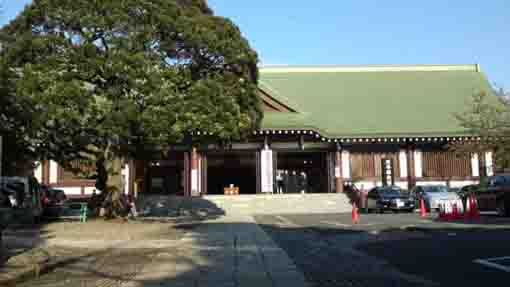
Honin(Taikyakuden)・Kishibojindo(Sonshindo)
Takikyakuden is the main hall of Hokekyoji and it has the business office and Kishibojindo Hall dedicated to the goddess of children on the end of the long corrido of the main hall.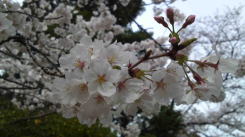
The Four Seasons In Hokekyoji
In spring, there is millions of cherry blossoms in Hokekyoji and in summer, lotus blooms on ryuo-ike pond. In fall, there are beautiful colored leaves. Every season, visitors could enjoy seeing the sights.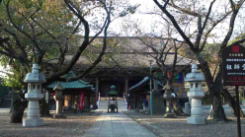
Soshido(Daido), the nationally important cultural property
It is characterized the twin hip-and-gable roof structure (hiyoku-irimoya-style), and hengaku written by Koetsu Honami hangs in front.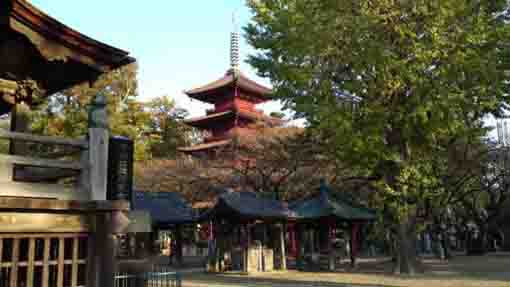
Goju-no-to (the five-story pagoda) , the nationally important cultural property
It was built in early Edo period (1622) by request of Koshitsu Honami supported by Maeda Family in Kaga.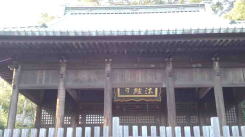
Hokke-do(the nationally important cultural property)
It was built in Kamakura period.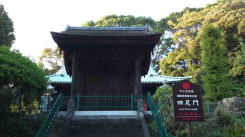
Yon-soku-mon (the nationally important cultural property)
It was moved from Aizen-dou in Kamakura 700 years ago.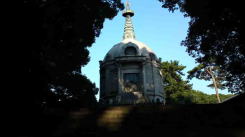
Shougyoden (the treasure hall)
It was designed by the famous architect Chuta Ito, it stores many scripts written by the Founder Nichiren.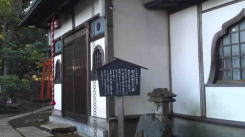
Shogan-jyoujyu-kigan-do (kiyomasa-kou-dai-zingi-do)
It enshrines Kiyomasa Kato, one of the most famous daimyo in Sengoku period.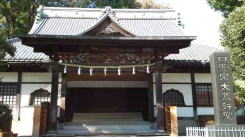
Aragyodo Hall (the hall where Buddhiist priests practice 100 days in winter severly)
From Nov 1 to Feb 10, hundreds of Buddhist priests practice severly every year.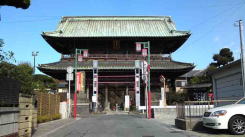
The Nio-mon Gate (The Deva Gate)
The henguku hunged in front of the gate was written by Koetsu Honami, famous artist in Momoyama Period.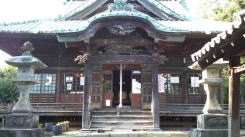
Setsu-do
It was built for worshipping Jurasetsunyo, Kishibozin, Daikokusama.
Black Gate(a tangible cultural asset by Ichikawa City)
It is also called Sou-mon (the main gate).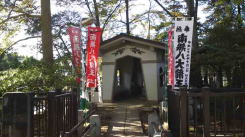
Hachi-dai-ryuo-do (the hall of dedicates the eight great dragon gods)
The founder Nichiren dedicated it for the dragon god to pray for rain.
Ugazin-do
It enshrins Ugazin who is the guardian deity of Hokekyou-ji Temple. Ugazin is the god of business, wealth and happiness.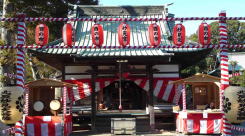
Myouken-do
It dedicated Hokushin Myouken star that the Chiba clan deeply believed, Hokekyou-ji traditionally succeeds. In November, Tori-no-ich is held in the site to dedicate the star.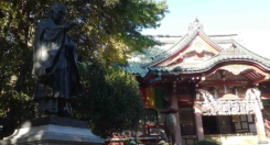
Oku-no-in (the first place Nichren preached)
The founder Nichiren preached first time at the Toki's castle called Wkakamiya Yakata. And Toki built a temple 'Hokkeji', it is the origin of Oku no In.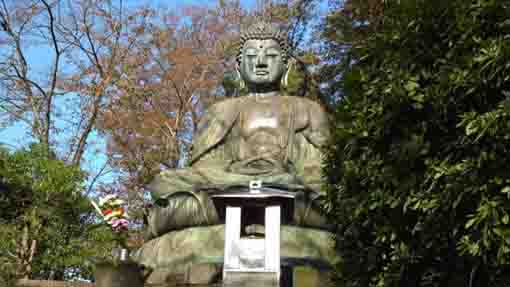
The Great Buddha(The Seated Statue of Shaka Nyorai)
It was built in 1719 by famous caster Ota Suruga-no-kami in Kanda. It is the bigest great Buddha in Chiba prefecture.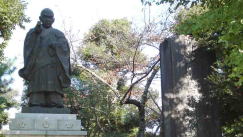
The statue of Nichijo and Naki-Icho
Nichijo was the first abbot of Nakayama Hokekyoji Temple and Naki Icho is a gingko tree having a sad legend.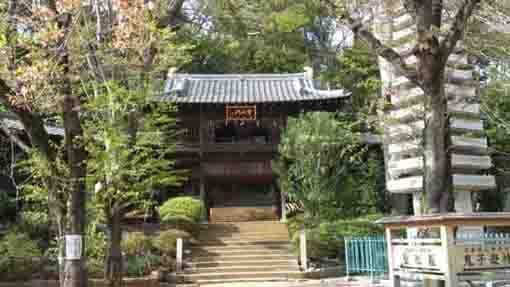
Kagami-ike-ato (the remain of the pond like a mirror), Emado hall, Hoden-mon gate, Ryuenkyo bridge
There are some other landmarks in Nakayama Hokekyoji Temple.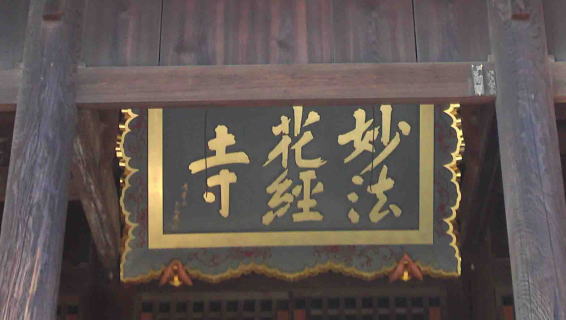
The artists, poets and writers related to Hokekyoji Temple
Koetsu Honami specially remained his calligraphy in Hokekyo-ji Temple, and Shiki Masaoka, Kafu Nagai discribed it well.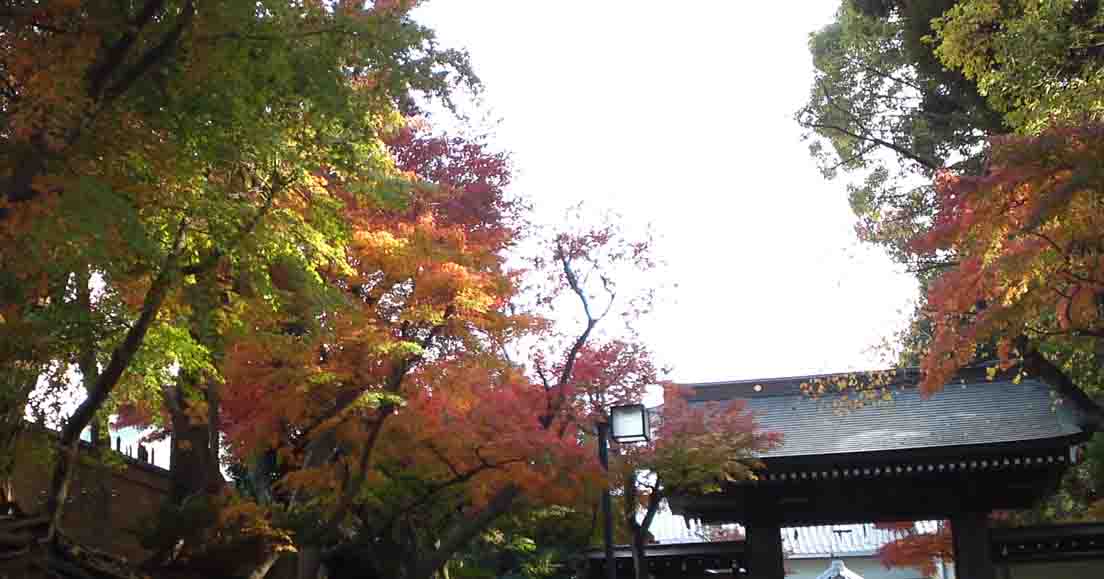
The Tacchu Temples and the Branch Temples in and around Nakayama Hokekyoji Temple
Some tacchue temples are introduced in this page.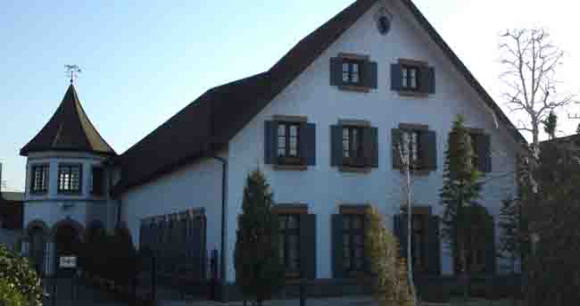
A Walk on the the area around Nakayama Hokekyoji Temple
There are some noted spots, Kaii Higashiyama Memorial Hall and so on, near Hokekyoji.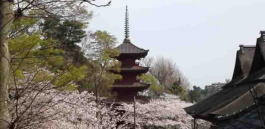
The Popular Viewing Sakura Spot / Nakayama Hokekyoji Temple
Cherry blossoms in Hokekyoji are amazingly wonderful.- 広告 Advertisement -
